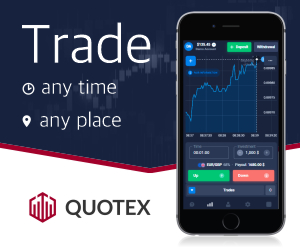Mastering Forex Trading
The Complete Professional Guide to Currency Markets — From Institutional Fundamentals to Advanced Algorithmic Strategies
1. Professional Market Mechanics
The foreign exchange market operates as a decentralized global marketplace where currencies are traded 24 hours a day during weekdays. With a daily turnover exceeding $6.6 trillion, it’s the largest and most liquid financial market in the world.
Market Participants Hierarchy
- Tier 1: Central banks and sovereign wealth funds
- Tier 2: Global investment banks (JP Morgan, Citi, UBS)
- Tier 3: Hedge funds and asset managers
- Tier 4: Corporate treasuries
- Tier 5: Retail brokers and traders
Institutional Perspective
Professional traders focus on the interbank market where the real liquidity exists. The retail market is simply a derivative of this primary market, with prices typically marked up through spreads or commissions.
Liquidity Dynamics
Liquidity follows distinct patterns throughout the trading day:
| Session | Time (GMT) | Characteristics | Key Currency Pairs |
|---|---|---|---|
| Tokyo | 23:00-08:00 | Lower volatility, range-bound | USD/JPY, AUD/JPY |
| London | 07:00-16:00 | Highest liquidity, major moves | EUR/USD, GBP/USD |
| New York | 12:00-20:00 | High volatility, news-driven | USD/CAD, USD pairs |
2. Institutional Flow Analysis
Professional traders analyze order flow to understand market dynamics beyond simple price action. This involves tracking actual transactions rather than just price movements.
Key Flow Indicators
- Volume Profile: Identifies significant price levels based on traded volume
- Delta Analysis: Measures buying vs selling pressure
- Liquidation Clusters: Areas where stop orders are likely concentrated
- Market Depth: Real-time order book analysis
Professional Technique
Combine volume profile with time-and-sales data to identify institutional absorption patterns. Large orders that don’t move price indicate strong absorption and potential reversal zones.
Commitment of Traders (COT) Analysis
The CFTC’s COT report provides weekly insights into positioning by different trader types:
| Trader Type | Behavior Pattern | Strategic Value |
|---|---|---|
| Commercials | Hedgers, often contrarian | Extreme positions signal turning points |
| Non-commercials | Large speculators | Trend followers, watch for overcrowding |
| Small traders | Retail positions | Typically wrong at extremes |
3. Advanced Technical Frameworks
Beyond basic chart patterns, professional traders employ sophisticated technical frameworks that combine multiple analytical dimensions.
Composite Indicators
- Volume-Weighted MACD: Traditional MACD weighted by volume significance
- Adaptive RSI: RSI with variable lookback periods based on volatility
- Fractal Efficiency Ratio: Measures market trending efficiency
Advanced Charting Techniques
- Market Profile: TPO (Time Price Opportunity) analysis
- Volume-at-Price: Histogram showing volume traded at price levels
- Footprint Charts: Detailed order flow visualization
- Delta Divergence: Spotting hidden buying/selling pressure
Professional Caution
Most retail technical indicators fail in forex due to the decentralized nature of the market. Focus on price action, volume analysis, and intermarket relationships instead of lagging indicators.
4. Quantitative Methods in Forex
Institutional traders employ statistical and mathematical models to identify edges in currency markets.
Key Quantitative Approaches
- Statistical Arbitrage: Mean-reversion strategies based on historical correlations
- Fractal Analysis: Identifying repeating patterns across timeframes
- Machine Learning: Pattern recognition using neural networks
- Sentiment Analysis: Natural language processing of news and social media
Backtesting Fundamentals
Professional backtesting requires:
- High-quality tick data (not just OHLC)
- Realistic execution assumptions (slippage, latency)
- Walk-forward testing with out-of-sample periods
- Monte Carlo simulation for robustness
Quantitative Edge
The most robust forex strategies often combine mean-reversion characteristics in Asian session with momentum characteristics during London overlap. This hybrid approach performs well across market conditions.
5. Professional Order Execution
Execution quality separates professional traders from amateurs. Institutional execution involves sophisticated techniques to minimize market impact.
Advanced Order Types
| Order Type | Professional Use | Advantage |
|---|---|---|
| Iceberg | Large orders without revealing full size | Reduces market impact |
| TWAP | Execution over specified time window | Averages execution price |
| VWAP | Execution relative to volume profile | Matches market volume |
| Implementation Shortfall | Balancing urgency vs. market impact | Optimizes trade-off |
Execution Algorithms
Professional traders use:
- POV (Percentage of Volume): Matches a percentage of market volume
- Arrival Price: Measures performance against entry point
- Dark Pool Aggregation: Accesses non-displayed liquidity
Execution Reality
In liquid markets like EUR/USD, execution slippage is typically 0.2-0.5 pips for small orders (<1M). For orders >10M, sophisticated algorithms are necessary to avoid moving the market.
6. Institutional Risk Systems
Professional risk management goes far beyond simple stop-loss orders.
Multi-Layered Risk Framework
- Pre-Trade Analysis: Value-at-Risk (VaR), stress testing
- Real-Time Monitoring: Position concentration, correlation risk
- Post-Trade Analysis: Execution quality, slippage tracking
Advanced Risk Metrics
| Metric | Calculation | Professional Threshold |
|---|---|---|
| Conditional VaR | Expected loss beyond VaR | <2% of capital |
| Maximum Drawdown | Peak-to-trough decline | <5% monthly |
| Risk-of-Ruin | Probability of losing X% | <0.1% for 20% loss |
| Sharpe Ratio | Return/volatility | >1.5 |
Critical Warning
Leverage above 10:1 dramatically increases risk-of-ruin probabilities. Professional forex funds typically use 3:1 to 5:1 leverage despite having access to much higher levels.
7. Algorithmic Trading Strategies
Algorithmic trading dominates professional forex markets, accounting for over 80% of volume.
Professional Strategy Types
- Market Making: Simultaneous bid/ask quotes
- Statistical Arbitrage: Pairs trading, mean-reversion
- Event Arbitrage: News-based trading
- Liquidity Detection: Identifying hidden orders
Algorithm Components
// Basic algorithmic framework
void runStrategy() {
gatherMarketData(); // Tick data, order book
calculateSignals(); // Technical, statistical
assessRisk(); // Position sizing, VaR
executeOrders(); // Smart routing
monitorPerformance(); // Slippage, fills
}
Latency Arbitrage
High-frequency traders exploit microsecond advantages in price updates across different liquidity pools. This requires colocated servers and direct market access (DMA).
8. Macro Trading Fundamentals
Currency values ultimately reflect macroeconomic realities. Professional traders monitor:
Key Macro Drivers
- Interest Rate Differentials: Primary long-term driver
- Purchasing Power Parity: Long-term equilibrium levels
- Current Account Balances: Trade and investment flows
- Political Stability: Risk premium assessment
Economic Model Framework
| Model | Equation | Application |
|---|---|---|
| Mundell-Fleming | IS-LM-BP | Policy trilemma analysis |
| Dornbusch Overshooting | Sticky prices | Short-term volatility |
| Portfolio Balance | Asset stock adjustment | Medium-term trends |
Professional Approach
Build a fundamental scorecard for each currency weighted by: interest rate outlook (40%), growth differentials (30%), current account (20%), and political risk (10%). Rebalance monthly.
9. Market Microstructure
Understanding how orders are matched and executed provides significant trading edge.
Key Microstructure Concepts
- Latency Arbitrage: Exploiting speed differences
- Order Book Dynamics: Depth, resilience
- Information Asymmetry: Informed vs. uninformed flow
- Market Impact: Price response to order flow
Liquidity Measurement
| Metric | Calculation | Interpretation |
|---|---|---|
| Bid-Ask Spread | Ask – Bid | Immediate cost |
| Market Depth | Volume at top levels | Absorption capacity |
| Price Impact | ΔPrice/Volume | Sensitivity to flow |
Professional Technique
Monitor the “microprice” (weighted midpoint between bid and ask based on queue position) for better execution timing than simple midprice.
10. Performance Metrics
Professional traders measure success through sophisticated metrics beyond simple P&L.
Key Performance Indicators
| Metric | Formula | Benchmark |
|---|---|---|
| Sharpe Ratio | (Return – Risk Free)/σ | >1.5 |
| Sortino Ratio | (Return – MAR)/Downside σ | >2.0 |
| Calmar Ratio | Return/Max Drawdown | >1.0 |
| Win/Loss Ratio | Avg Win/Avg Loss | >1.5 |
Advanced Analysis
- Strategy Segmentation: Performance by market regime
- Contribution Analysis: Profit source decomposition
- Scenario Testing: Stress under historical crises
Performance Reality
Over 90% of retail traders lose money, while professional funds typically achieve 10-20% annual returns with 10-15% volatility. The difference comes from discipline, risk management, and institutional advantages.
11. Professional Appendix
Recommended Reading
- Currency Trading and Intermarket Analysis – Ashraf Laidi
- Forex Price Action Scalping – Bob Volman
- The Art of Currency Trading – Brent Donnelly
- Algorithmic Trading – Ernie Chan
Professional Tools
- Bloomberg Terminal: FXIP, FXFA
- Reuters Eikon: FX trading modules
- QuantConnect: Algorithmic backtesting
- MetaTrader 5: Strategy tester
Final Professional Advice
Success in forex requires treating trading as a business. Maintain detailed records, continuously analyze performance, and focus on process over outcomes. The market will always present new opportunities – survival and consistency matter more than any single trade.




